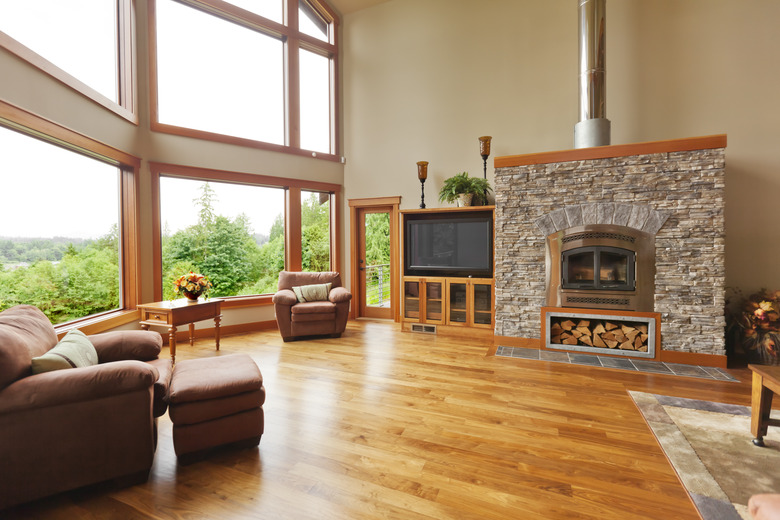How To Get Black Spots Out Of Wooden Floors
We may receive a commission on purchases made from links.
Hardwood floors create a warm, inviting space, but black spots immediately detract from the look. While you can hide a few small black spots with a well-placed rug or end table, larger spots aren't as easy to disguise. Removing the darker spots on your hardwood floors helps restore their natural beauty and gives you more design freedom.
Causes of Black Spots
Causes of Black Spots
Black spots on hardwood floors are typically due to moisture that seeps into the wood. This can happen if you spill a drink on the floor and don't clean it up right away. It can also happen due to messes from kids or pets, including urine and vomit, which can be worse if you don't notice the accident immediately. Using a steam mop on your hardwood floors can also leave black marks on the wood if it goes through openings in the finish, such as worn spots or gaps between floor planks.
Sand the Black Spots
Sand the Black Spots
One option is to sand away the black stains to reveal unstained wood. Sand with the wood grain to avoid causing more damage to the floor. Once you remove the finish and stain, you can sand a little more to get rid of the black marks. Avoid sanding too much, though, or you'll create a low spot in the stained area.
Sanding alone works best for surface stains that haven't deeply penetrated the wood. If the black stains don't disappear with sanding, you might need to use additional bleaching methods to remove the stains.
Bleach the Black Spots
Bleach the Black Spots
Another option for handling hardwood floor stains is to bleach the area either before you sand it for an easy stain-removal option or after you sand if you need additional help removing the stains. You have different options to attack the stains.
A safe option is white vinegar, which you can combine with equal parts of warm water to scrub the stain. Vinegar also helps to remove odors if the stains are due to urine or other smelly sources. You can also make a paste by adding a tiny amount of vinegar to baking soda, spreading it over the stain, and letting it dry. Then, use a rag to scrub the area.
Another option you likely have at home already is hydrogen peroxide. Apply it to the stain and let it sit until it bleaches it enough. Wipe away the excess with a cloth. Keep in mind that you can overbleach the wood and make it lighter than the rest, which may require you to sand and refinish it.
Refinish the Area
Refinish the Area
Once you remove the dark spots, refinishing the hardwood flooring is necessary. It can be challenging to match up the sanded or bleached area to the exact color of the surrounding floor. If you stained the floors originally, use the same color or do your best to find a close stain match if you're not sure what color was used. You'll also need the same type of finish, including the same sheen, to help the repaired area blend in with the surrounding area.
Once you find your match, apply the stain with a rag according to the package instructions. Wipe away the excess stain. Apply more stain if necessary to get the repaired area to look as similar as possible to the rest of the floor. Once the stain fully dries, apply the selected top coat over that area.
If you have large areas of black spots, stains, or other damage, sanding and refinishing the entire hardwood floor might be a better option. This can bring a dull or damaged wood floor back to life and increase the value of your home.
